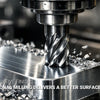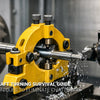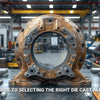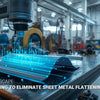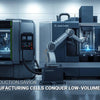High-Pressure vs Gravity Die Casting: Which Process Saves You More Money?
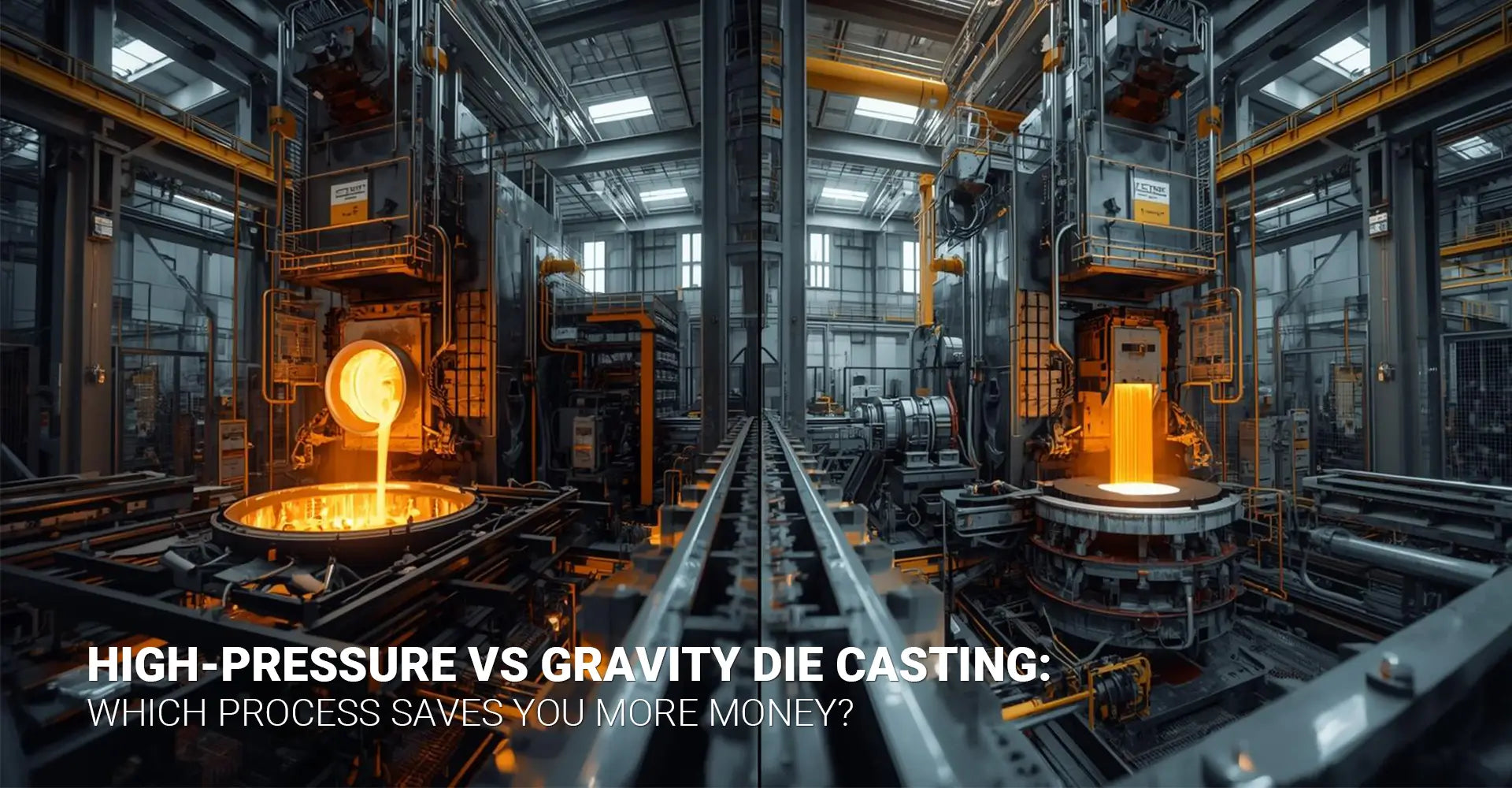
High-Pressure vs Gravity Die Casting: Which Process Saves You More Money?

Are you stuck choosing between high pressure vs gravity die casting for your next project? Therefore, this comprehensive comparison breaks down the real costs, strength differences, and accuracy benefits of each method. Moreover, we'll show you exactly when each process makes financial sense based on production volume and part requirements.
Quick Answer: High-pressure die casting works best for high-volume production (50,000+ parts annually) with $60,000-$500,000+ tooling costs but lower per-part costs. Meanwhile, gravity die casting suits medium volumes (250-50,000 parts) with $10,000-$90,000 tooling costs and better heat treatment capability.
However, the choice isn't just about volume and cost. Additionally, factors like part strength, porosity levels, and dimensional accuracy play crucial roles in determining the right process for your application. Furthermore, understanding these differences will help you make the most cost-effective decision for your specific project needs.
[Table of Contents]
- What Makes High-Pressure Die Casting Different from Gravity Die Casting?
- Which Process Actually Costs Less for Your Production Volume?
- How Do Strength and Heat Treatment Capabilities Compare?
- Why Does Dimensional Accuracy Matter for Your Bottom Line?
What Makes High-Pressure Die Casting Different from Gravity Die Casting?
High-pressure die casting and gravity die casting represent two fundamentally different approaches to metal forming. Consequently, each process uses distinct methods to fill the mold cavity and create finished parts through various aluminum die casting methods.
Key Difference: HPDC vs GDC comes down to filling mechanism - HPDC forces molten metal into the mold under extreme pressure (150-1200 bar), while gravity die casting relies on gravity alone to fill the mold cavity. As a result, HPDC achieves faster cycle times but higher porosity levels.
The pressure difference creates cascading effects throughout the entire production process. For instance, HPDC's high injection pressure allows for thinner wall sections and complex geometries. However, this same pressure traps air bubbles, creating porosity that prevents reliable heat treatment die casting applications. On the other hand, gravity die casting's slower fill rate reduces air entrapment significantly. Therefore, GDC parts can undergo heat treatment to achieve T6 temper strength levels that HPDC parts typically cannot reach without risking surface blistering.
Which Process Actually Costs Less for Your Production Volume?
Production volume die casting decisions determine which process delivers better value for your investment. Therefore, understanding the break-even point between tooling cost die casting expenses and per-part costs becomes critical for project profitability.
Volume Breakdown: When conducting a die casting cost comparison, gravity die casting wins for 250-50,000 parts annually due to lower tooling investment. Meanwhile, high-pressure die casting becomes cost-effective only above 50,000+ parts per year when high tooling costs get amortized across large production runs.
The math behind this volume decision involves both fixed and variable costs. For example, HPDC tooling ranges from $60,000 to $500,000+ depending on part complexity and cavity count. However, the per-part cost drops dramatically with volume due to faster cycle times. Conversely, GDC tooling costs $10,000-$90,000 but has higher labor costs per part due to longer cycle times. Additionally, a real automotive supplier saved 35% on transmission housing costs by switching from GDC to HPDC when their annual volume exceeded 75,000 parts. Nevertheless, the same company uses GDC for lower-volume specialty components where heat treatment requirements outweigh cycle time advantages.
How Do Strength and Heat Treatment Capabilities Compare?
Pressure die casting strength requirements often determine the optimal process choice. Furthermore, the ability to heat treat castings can dramatically impact final mechanical properties and application suitability.
Strength Trade-off: HPDC parts show higher as-cast strength due to rapid cooling, but GDC parts achieve superior final strength through heat treatment capability. Moreover, this die casting porosity comparison reveals that GDC's lower porosity (less air entrapment) allows reliable T6 heat treatment that HPDC typically cannot support.
The porosity difference creates the most significant strength distinction between these processes. Specifically, HPDC's high-pressure injection traps air bubbles that expand during heat treatment, causing surface blistering and part failure. Therefore, HPDC parts usually remain in the as-cast condition with limited strength improvement options. In contrast, gravity die casting's slower fill rate minimizes air entrapment, creating parts with porosity levels suitable for solution heat treatment and artificial aging. Consequently, GDC parts can achieve T6 temper conditions with yield strengths exceeding 300 MPa compared to typical as-cast strengths of 150-200 MPa. Additionally, this heat treatment capability makes GDC the preferred choice for structural automotive and aerospace components requiring maximum strength-to-weight ratios. When parts need additional strength enhancement, manufacturers often combine die casting with other processes like investment casting for optimal results.
Why Does Dimensional Accuracy Matter for Your Bottom Line?
Gravity die casting accuracy and surface finish directly impact your secondary machining costs and part rejection rates. Therefore, understanding each process's capability helps predict total manufacturing expenses beyond just casting costs.
Accuracy Winner: High-pressure die casting delivers superior dimensional accuracy and surface finish, often eliminating secondary machining operations. However, gravity die casting provides good accuracy while offering design flexibility through sand core integration for complex internal features.
The accuracy advantages of HPDC stem from its ability to completely fill intricate mold details under high pressure. For instance, HPDC routinely achieves tolerances of ±0.1mm on critical dimensions with surface finishes suitable for direct use in many applications. Moreover, the process excels at producing thin-wall sections down to 1.5mm thickness that would be impossible with gravity casting. Nevertheless, GDC offers unique design advantages through sand core capability, enabling complex internal passages and undercuts that permanent HPDC tooling cannot accommodate. Additionally, this flexibility proves valuable for hydraulic manifolds, heat exchangers, and other components requiring intricate internal flow paths. Furthermore, while GDC surface finish typically requires more finishing operations, the lower tooling investment often justifies additional machining costs for medium-volume applications. When precise dimensional control becomes critical, manufacturers may combine die casting with secondary CNC machining operations.
Conclusion
Choosing between high-pressure and gravity die casting depends on your specific production volume, strength requirements, and design complexity. Therefore, HPDC excels for high-volume production with excellent surface finish and dimensional accuracy. Meanwhile, GDC provides cost-effective solutions for medium volumes with superior heat treatment capability and design flexibility. Moreover, understanding these trade-offs ensures you select the process that minimizes total project costs while meeting performance requirements. When you need expert guidance on die casting process selection, consider partnering with experienced manufacturers who understand both die casting capabilities and complementary manufacturing processes.
[External Links Recommendation]
[high pressure vs gravity die casting][^1]
[die casting cost comparison][^2]
[pressure die casting strength][^3]
[gravity die casting accuracy][^4]
[tooling cost die casting][^5]
[production volume die casting][^6]
---
[^1]: Understanding the differences can help you choose the right casting method for your project.
[^2]: Exploring cost comparisons can aid in budgeting and selecting the most economical casting option.
[^3]: Understanding the strength of pressure die casting can help you choose the right materials for your projects.
[^4]: Exploring the accuracy of gravity die casting will provide insights into its reliability for precision applications.
[^5]: Understanding tooling costs is crucial for budgeting and optimizing production efficiency in die casting.
[^6]: Exploring production volume insights can help you scale operations and improve cost-effectiveness in die casting.

